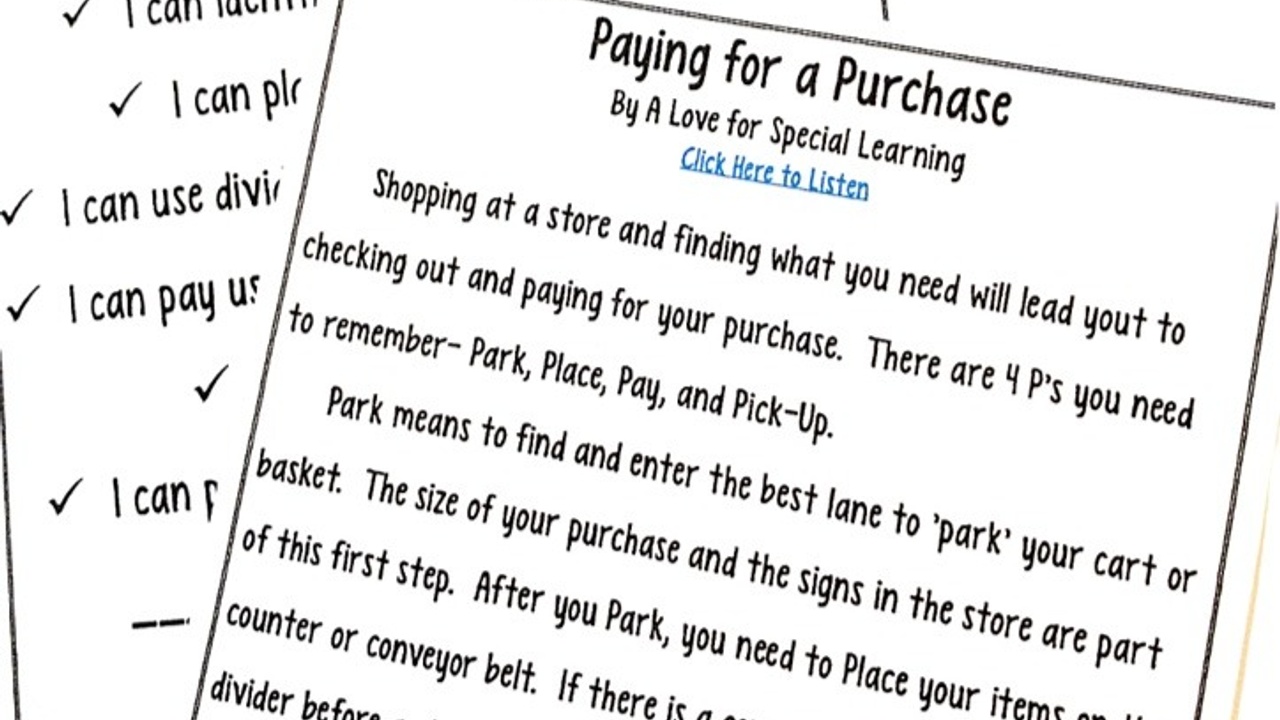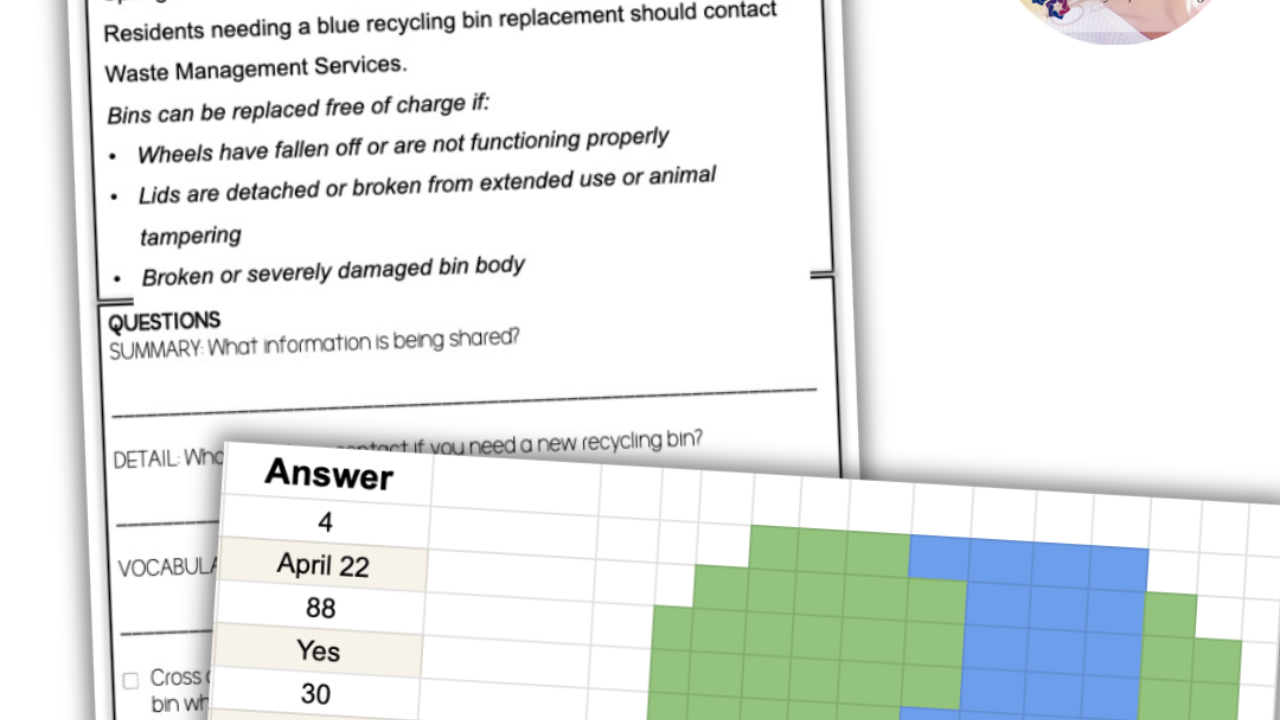How To Teach: Paying For a Purchase When Shopping
functional life skills how to teach life skills special education teachers teacher experience transition Apr 18, 2022
Importance of Paying for a Purchase
-
Pre and Post assessment
-
1 page narrative explaining the skill with and without visual text supports (to incorporate functional reading)
-
5 skill practice activities to learn and/or reinforce the focus skills
-
Game for students to practice their skills (because learning is fun)
-
Boom Cards for practice or assessment
-
Student learning reflection worksheet (thumbs up or down)
-
Encouraging on-topic quotes (use as a classroom poster or starter for each class period)
-
5 strategies for success (tips for being successful with the focus skills)
-
Coloring page with on-topic graphics
-
Skill mastery certificate for positive recognition and reinforcement
-
Data collection sheet on specific focus skills
-
Homework sheet to encourage students to practice the skill outside of the school setting
-
Word search of key vocabulary terms
-
Visuals for focus skills with age appropriate colors and graphics

Heather
Blog Post Author
Heather is a former high school and transition special education educator with 15 years of experience in the classroom. She is passionate about creating high-quality, age-appropriate resources, sharing her knowledge of teaching with fellow educators, and helping Illinois families with disabled teens and young adults as they learn about and navigate the confusing world of benefits.

Are you ready to write better money-related IEP goals?

Yes, five skill practice worksheets for FREE! Functional reading comprehension, vocational, safety, kitchen & cooking, and student IEP transition plans.

Feel more confident writing your next IEP Transition Plan!

It's a 4.8 Star rated functional math worksheet activity for a reason!

Making Age of Majority make sense, because turning 18 should be easier!

The functional life skills warm-up you need for your morning routine!

Age approrpiate consumer math skills practice really does exist!

Check out 15 pages of the Consumer Math Checking Account lesson unit for FREE!

The perfect (and FREE) Back to School, ESY, or any-time-of-the-year resource to use when visiting any store!

Want an easy-to-use, digital (and PDF) life skills transition assessment?
















